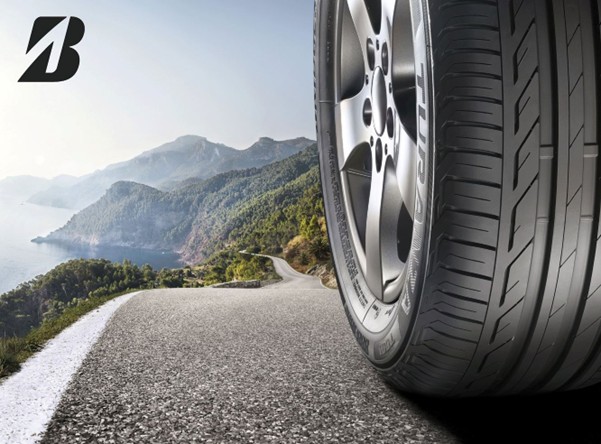Tyre 101 for New Drivers

Congratulations on finally getting your license! Now that you’ve learnt the basics of being a safe driver, you’ll also need to ensure your vehicle is safe to drive. While driving school may have equipped you with the tools to be a safe road user, the same can't be said for vehicle maintenance. Every part of your vehicle, especially its tyres, must be regularly maintained to prevent common tyre problems and ensure your vehicle performs at its best. There’s a lot more to tyres that new drivers should be aware of, so here’s our tyre 101 to get you started.
Components of A Tyre
Tyres consist of several key components that are essential for optimal functionality. In addition to these parts, it’s also important to understand tyre specifications—such as tyre size, speed rating and load index—which are shown on the sidewall and play a crucial role in selecting the right tyres for your vehicle. With that in mind, let’s look at the main components that make up a tyre:
· Tread: Grips the road to provide vehicle stability
· Sidewall: Acts as a cover between the tread and bead to withstand damage
· Body Ply: Keeps your tyre air pressure contained securely
· Belt: Supports the tread to enhance traction
· Bead: Secures tyre to the vehicle’s rim
Types of Tyres
Tyres come in various types, each with its own strengths:
· Performance Tyres: Deliver impressive control, responsiveness and maximum traction
· Touring Tyres: Provide for comfortable and quiet driving experiences
· Fuel-Efficient Tyres: Feature low rolling resistance to reduce fuel consumption
· Run-Flat Tyres: Allows drive up to 80 km at speeds of up to 80 km/h, even after a puncture.
· SUV [TY1] Tyres: Maximise handling performance and enhances comfort
· 4X4 Tyres:[TY2] Offer exceptional off-road capabilities while maintaining reliable on-road performance
Hydroplaning
Even as new drivers, you must’ve heard that driving on wet roads can be dangerous as vehicles tend to slip and skid. This is known as hydroplaning, where your vehicle slides across the film of water on a wet road, losing grip with the road itself. The reasons behind hydroplaning can vary from road conditions, the speed of your vehicle and more importantly, tyre tread depth. A vehicle that hydroplanes is difficult to control which can result in fatal accidents. While there are manoeuvres to mitigate the risk of crashes, it's best to equip yourself with tyre maintenance tips that prevent hydroplaning altogether.
Tyre Maintenance
The idea of having to regularly maintain your tyres may sound a little tedious. But understanding and addressing common tyre problems is crucial for your safety behind the wheel. That said, tyre maintenance should not be taken lightly as it can compromise your safety behind the wheel. Here are three aspects of tyres that you should regularly maintain.
1. Tyre Air Pressure
Tyres eventually lose air pressure over time and improperly inflated tyres can negatively impact your vehicle’s handling and fuel consumption. Keep track of your tyre’s air pressure at least once a month and you can do so by using a tyre pressure gauge at home.
2. Tyre Tread Depth
Your tyres may also go ‘bald’ after years of driving, in which your tyre tread depth falls below 1.6mm. This results in a lack of sufficient traction on the road – making your vehicle more susceptible to hydroplaning. Check your tyre tread depth regularly and replace the tyres with new ones when they wear out.
3. Tyre Alignment
Over time, your tyres may go out of alignment and this can result in uneven wear or accelerated tyre balding. This will affect your vehicle’s handling, causing it to pull off to the left or right even when driving straight. If you have experienced this, visit a professional to get your tyres aligned immediately.
4. Tyre Rotation
Rotating your tyres helps distribute wear more evenly, preventing premature damage. It’s recommended to rotate your tyres every 5,000 to 8,000km, even if there are no signs of uneven wear. Regular rotations promote even tyre wear, improving your vehicle’s handling and ensuring safer driving. [TY1]
As a new driver you will be more focused on being a responsible road user, but it’s important that your vehicle is maintained regularly for your own safety and the safety of other road users. With experience, we are confident you’ll learn to be more vigilant on your vehicle’s condition. In the meantime, you should begin forming a regular vehicle maintenance routine to keep yourself safe when driving.
Browse our extensive online tyre catalogue to find the Bridgestone tyres that work best for you.